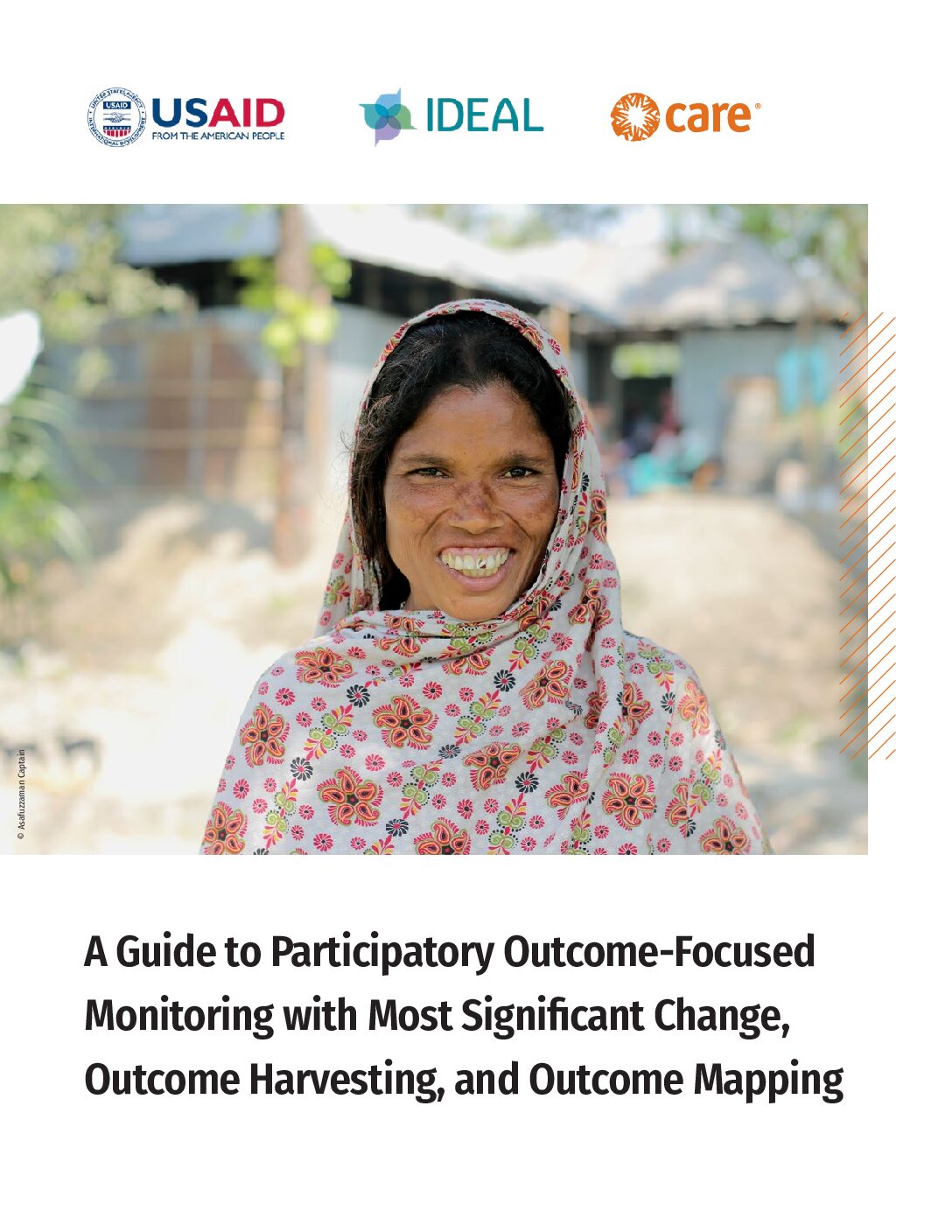CARE’s comprehensive resource, “Guide to Participatory Outcome-Focused Monitoring,” supported by USAID’s Implementer-Led Design, Evidence, Analysis (IDEAL) Small Grant Programs, enhances the expertise and practical application of Monitoring and Evaluation designers and managers in development and humanitarian contexts from the design stage of intervention. Divided into two parts, this resource delves into participatory, outcome-focused monitoring methodologies including Outcome Harvesting (OH), Outcome Mapping (OM), and Most Significant Change (MSC) processes, offering invaluable insights and tools for field monitoring staff to derive group and individual narratives and empirically analyzing these narratives into validated stories that inform and enhance the progression of program implementation. The guide, characterized by its technical depth and multifaceted approach, offers detailed data collection steps and flowcharts, appendixes, and real case examples from CARE to illustrate complexity-aware monitoring methodologies which embrace all aspects of Results-Based Protection (RBP) and Outcome-Oriented Approaches to humanitarian and development work.
Blended methods and Outcome-Oriented ways of monitoring
Selecting the appropriate approach or integrating multiple methodologies is a challenging yet critical task for Monitoring specialists. The guide underscores the significance of comprehending the nuances of Outcome Mapping (OM), Outcome Harvesting (OH), and their fusion with Most Significant Change (MSC) techniques, to foster adaptive learning opportunities throughout project implementation. By blending OM or OH with MSC, practitioners can delve deeply into specific changes or diverse perspectives on outcomes from diverse participants of an intervention, thereby enhancing the depth of understanding and sculpting avenues to improve the intervention. This integrated approach to data collection and outcomes storytelling is a fit-for-purpose information management system that enables ongoing analysis, reflection, learning and adaptation. Furthermore, the approach within the guidelines helps break down traditional siloes in program implementation by ensuring qualitive monitoring techniques are not limited to informing the end phase of intervention. Rather, evidence directly gathered by monitoring specialists from populations is reiteratively informing intervention in meaningful ways. From a protection perspective, the collaboration of program staff with M&E specialists in informing program intervention is also critical breaking down programmatic siloes that my prevent relevant data feedback.
This integrated approach is particularly crucial for protection actors, facilitating the development of dynamic information management systems that are open to intaking positive and negative outcome harvests and reiteratively adapting theories of change and attributing emerging changes of behaviors to the program. These systems continuously gather and analyze qualitative data against the intervention’s overarching Vision Statement, which serves as aspirational groundwork for practitioners through the ups and downs of the intervention’s journey or a theories of change review. Towards the end of the guide, systemic restraints such as participant motivation and reach, staff time and funding to MSC, OH and OM are acknowledged. Therefore within the system, program staff must prioritize key informants and actors, and if the number of these groups exceeds resources, the qualitative approaches provided can be utilized to optimize and exemplify what works, what does not and why.
